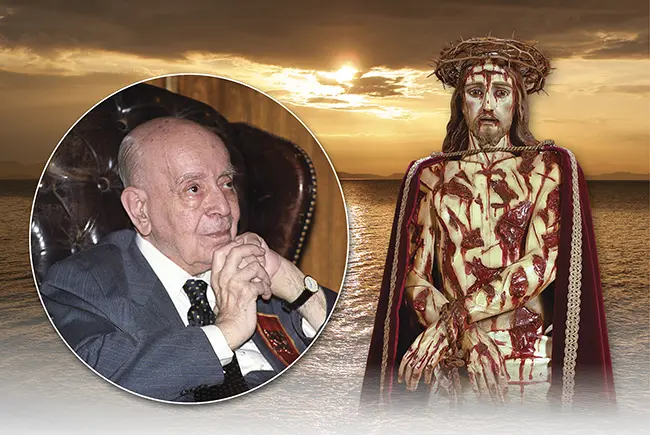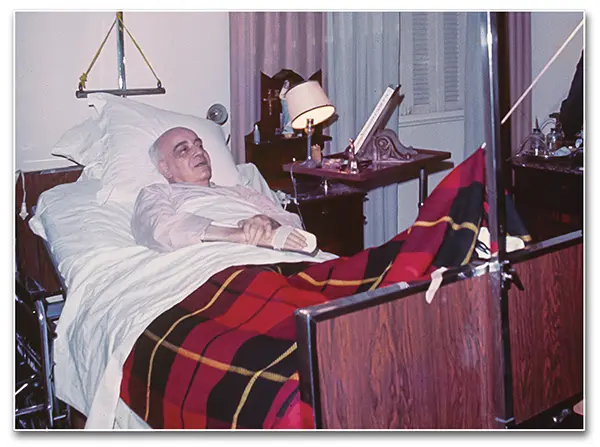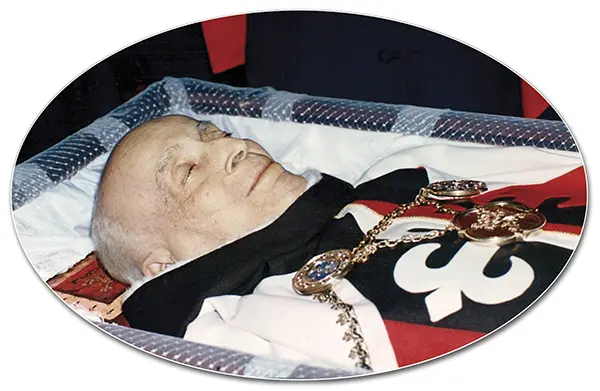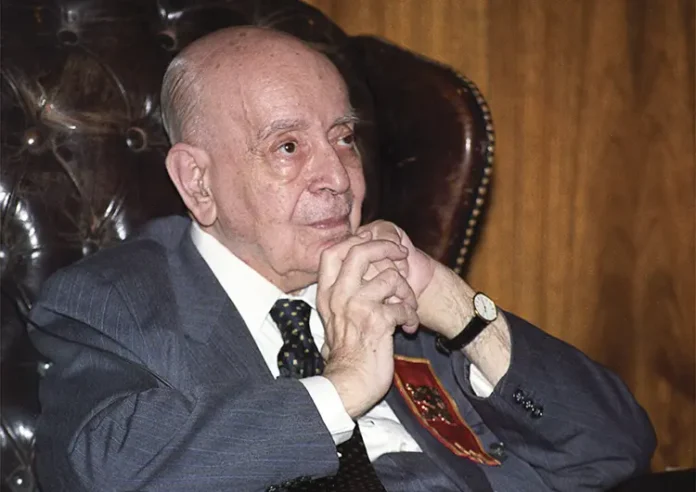Expiatory victim: the concept at the centre of this article is so foreign to any contemporary reality that it does not seem superfluous to explain it.
The expiatory victim is essentially someone who suffers for others. Individuals who offer even their very lives to God for the sake of others or of higher objectives deserve this title. However, in the majority of cases they remain unknown, and expect nothing in return.
The definition will certainly make a person from today’s society frown; a society in which the principles of self-interest have become almost absolute, or rather have made other principles – perhaps less practical, but more transcendent – such as charity, become almost obsolete.
To sacrifice oneself for no personal advantage might seem like madness, or even a crime against humanity. A crime, yes, whose perpetrator would be none other than a bloodthirsty God, who demands the sacrifice of the innocent to redeem the guilty, and whose accomplices form a list including names such as St. Therese, the little shepherds of Fatima and, above all, Jesus Christ Himself.
But with the eyes of faith, the truth is seen quite differently. As St. Paul teaches us: “in my flesh I complete what is lacking in Christ’s afflictions for the sake of His Body, that is, the Church” (Col 1:24). The Mystical Body of Christ is undergoing a Passion, and it is in light of this that we can understand the mission and importance of the expiatory victims.
The Church’s “Garden of Olives”
The agony in the Garden was the moment of the Via Crucis that most touched Dr. Plinio’s piety. There, confronted with the prospect of the sufferings awaiting Him, Jesus supplicated: “Father, if Thou art willing, remove this cup from Me” (Lk 22:42a). Thus was expressed the tribulation of a being both divine and human. In the face with Providence’s plan, which caused Him affliction and made Him sweat blood, Our Lord’s human nature was terrified.
The role of the expiatory victim is to join with Our Lord in saying their “fiat voluntas tua” for the Church: “Not my will but Thine be done”
Something analogous occurs with the Church. At times her Passion takes on the nature of a true agony – from the Greek, struggle – in which what we might call the “human nature” of the Mystical Body – that is, the human beings who constitute her, representing her visible face – feel that the fulfilment of the divine will weighs too heavily upon them, and therefore resist obeying. Such individuals prefer a Church that is more in accordance with this world, that is more “human” and less divine. As a result, they disfigure the Church, as if “forcing” her to say to God: “Remove this cup from me!”
Now, if it is within our nature that this agony takes place, it is also from within it that reparation should be carried out. It falls to expiatory victims to pronounce, with Our Lord, the words “fiat voluntas tua” for the Church: “not my will, but Thine, be done” (Lk 22:42b).
Three more breaths
During the 1980s, in his apartment on Alagoas Street in São Paulo, Dr. Plinio begins his first prayers of the day. After an almost sleepless night due to the weight of his worries, he is exhausted. As has become habitual, his gaze turns to the statue of the scourged Christ that is in his room.
At that moment, he receives a grace: he has the impression of seeing the image come to life and sigh deeply three times. In the depths of his soul, he feels that Our Lord says to him: “My son, when a man considers that he has reached the peak of exhaustion and thinks that he can bear no more, he still has three more breaths to give.”
Reinvigorated by that grace, Dr. Plinio prepares himself to carry not only the weight of that day but also of the years of sufferings that yet await him. It was the call to the Garden of Olives, which he answered incessantly, following the example of Jesus, with an invariable “fiat voluntas tua”.

A pain worse than death
In fact, Dr. Plinio once confided to some spiritual sons: “Reading the life of St. Therese, it seemed to me much more useful to the Catholic cause to give myself up as an expiatory victim. To die at a single stroke, offering an immediate sacrifice […]. In a few years, as a result of that sacrifice, the Counter-Revolution would be dominant.”1
Feeling in the depths of his soul Our Lord’s invitation to give his all, Dr. Plinio answered with the same “yes!” he had given Him his whole life
However, God did not desire a premature death from him, as from the Saint of Lisieux. In fact, what was in store for him was not to shed the blood of his body all at once, but rather to give the blood of his soul, which would be poured out over the course of decades…
On Dr. Plinio’s Calvary, Providence gave him to drink of a chalice as bitter as it was unexpected. Seeing that heterodoxy was rampant in certain Catholic circles, he threw himself immediately into the fray. However, those who should have been the first to support him failed to do so. Instead, revealing their complicity with the false doctrines, they attacked him.
This cross accompanied him throughout the entire epic involving his work In Defence of Catholic Action, published in 1943, which he later dubbed his kamikaze book. The analogy with the Japanese pilots is exact. The publication dealt the adversaries a fatal blow, but also cast Dr. Plinio into an annihilating ostracism: “Exclusion and rejection enveloped us, when we were still in the prime of life: this was the foreseen sacrifice, to which we consented.”2
We could considerably extend the narration of this part of his “via crucis”. But there are still many “stations” to cover…
A trial, a grace and a promise
For a founder, the decadence of his spiritual children is the cruellest of torments. In this particular case, the bitterness suffered was so severe that in 1967 it provoked the acute diabetes crisis mentioned in a previous article.3
His offering of himself as a victim to save his work was promptly accepted, and Dr. Plinio was soon to see the fruits of his immense sacrifice
Dr. Plinio attributed the spiritual deterioration of his disciples to a possible punishment from Providence for some sin of his, unknown to him. He was urgently hospitalized with advanced gangrene in his foot, and the prospect of his impending death further increased this torment: “I asked myself if it was not, finally, the moment when Our Lady, weary of me, would free my soul.”4
However, as we have seen, it was not the prospect of death itself that afflicted him, but rather the idea that his mission would be truncated by it: “I was certain that my death at that juncture would bring about the ruin of the endeavour that was beginning to flourish with vigour and which I ardently desired to carry out for the greater glory of Our Lady, before dying.”5
At the apex of his suffering, however, the Mother of Mercy intervened with the grace of Genazzano and, at the worst moment of his illness, an unshakeable certainty was anchored in his soul: he would fulfil his mission.
Wonders born of an accident
Nevertheless, the spiritual decline of his sons continued, reaching such a paroxysm that Dr. Plinio felt the need to renew his offering as a victim, this time specifically in the intention of saving his work. His offering was accepted by Providence with remarkable haste.
The day after the offering, February 3, 1975, he suffered a serious car accident: several bones fractured, two teeth knocked out, deep lesions all over his body, a violent blow to the head that left him in a state of semi-consciousness for several days. Due to a fractured femur, he would be obliged to use a wheelchair for the rest of his life.

However, the fruits produced by this immense sacrifice exceeded Dr. Plinio’s expectations. Winds of renewed fervour began to blow over his disciples, especially upon a cherished son: the then Mr. João Clá.
Referring to the attentive gaze of his follower, who accompanied him throughout his convalescence, Dr. Plinio stated: “I can see from the ensuing repercussions that he paid attention to everything, he analysed and drew conclusions from everything, with filial devotion. Our Lady was well-served in that he was edified with what he saw. To what extent could this edification have contributed to his subsequent accomplishments? Perhaps in no small measure.”6 Indeed, thanks to Msgr. João’s apostolate, everything flourished in the work.
But the ascent of Calvary continued. Violent publicity campaigns were launched against the movement founded by Dr. Plinio, like great waves of mud. Just one of these “tsunamis” of calumny, which took place in 1975, totalled more than two thousand defamatory newspaper articles in two months. He faced it all, suffering unspeakably.
If only one point were clear…
Finally, 1995 was the year in which the sacrifice was consummated. In the final months of his earthly life, Providence asked him to drink the most bitter draughts from the chalice. Attacks from external enemies and, even worse, from spiritual sons, submerged his soul in a sea of grief. All the while he was fighting a cancer that devastated his health over his last year of life.
Admitted to the Oswaldo Cruz German Hospital in São Paulo, Dr. Plinio spent a month immersed in atrocious physical and, above all, spiritual suffering, until October 3, when he surrendered his soul to God. His greatest anguish in this final stage consisted of a tremendous perplexity: how could he fulfil his mission? That is why he repeated this mysterious lamentation three times: “If only one point were clear to me, everything would be resolved.”
Our Lady wanted this further trait of resemblance to her Divine Son from him: the feeling of abandonment by God and the futility of his blood.
In failure, triumph!
Death is a deeply misunderstood phenomenon. We compare it to sleep, but for those who cross the threshold of this life, it must be much more like an awakening. It is only through death that one can contemplate the whole of reality, in face of which earthly existence is but a kind of mirage.
Perhaps his smile at the threshold of the tomb was caused when he realized that, from Heaven, he could more effectively draw others to Mary
After Dr. Plinio’s passing, a smile blossomed on his inert lips. What did this discreet sign signify? Could it be that that “one point”, upon becoming clear in the afterlife, shone so brightly that it illuminated even his physiognomy? If so, what was it he saw?
Of all the prophecies referring to Jesus’ Passion, Psalm 21 is among the most complete. Beginning with the poignant cry, “My God, my God, why hast Thou forsaken me?”, repeated by Christ on the Cross, it ends in a song of praise for the man who has been attended by Providence. This is the itinerary of all the prophets: through apparent failure, they fulfil their mission and bring about the realization of their prophecies.
How could Dr. Plinio be excluded from this rule? He himself once prognosticated: “My head would be cut off by disappointment, but, true to itself, it would hit the ground and carry out God’s plan. My disappointed hopes will have inaugurated the Reign of Mary.”7

The defeat of the Revolution and the triumph of Our Lady were Dr. Plinio’s prophecy par excellence, the goal of his life. Working, fighting and praying, he pursued it; and in being crucified, he obtained it from God. Perhaps his smile at the tomb’s threshold was caused when he realized that, taken up from the earth, he could more effectively draw people to Mary. ◊
Notes
1 CORRÊA DE OLIVEIRA, Plinio. Talk. São Paulo, 16/7/1994.
2 CORRÊA DE OLIVEIRA, Plinio. Kamikaze. In: Folha de São Paulo. São Paulo. Year XLVIII. No.14,489 (Feb. 15, 1969), p.4.
3 The World for Mary: the Apex of Devotion, in this issue.
4 CORRÊA DE OLIVEIRA, Plinio. Conference. São Paulo, 13/1/1968.
5 CORRÊA DE OLIVEIRA, Plinio. Una “dichiarazione”. In: Madre del Buon Consiglio. Genazzano. Year LXXXVIII. No.7-8 (July-Aug., 1985), p.28.
6 CORRÊA DE OLIVEIRA, Plinio. Conference. São Paulo, 6/2/1982.
7 CORRÊA DE OLIVEIRA, Plinio. Conversation. São Paulo, 23/1/1994.


